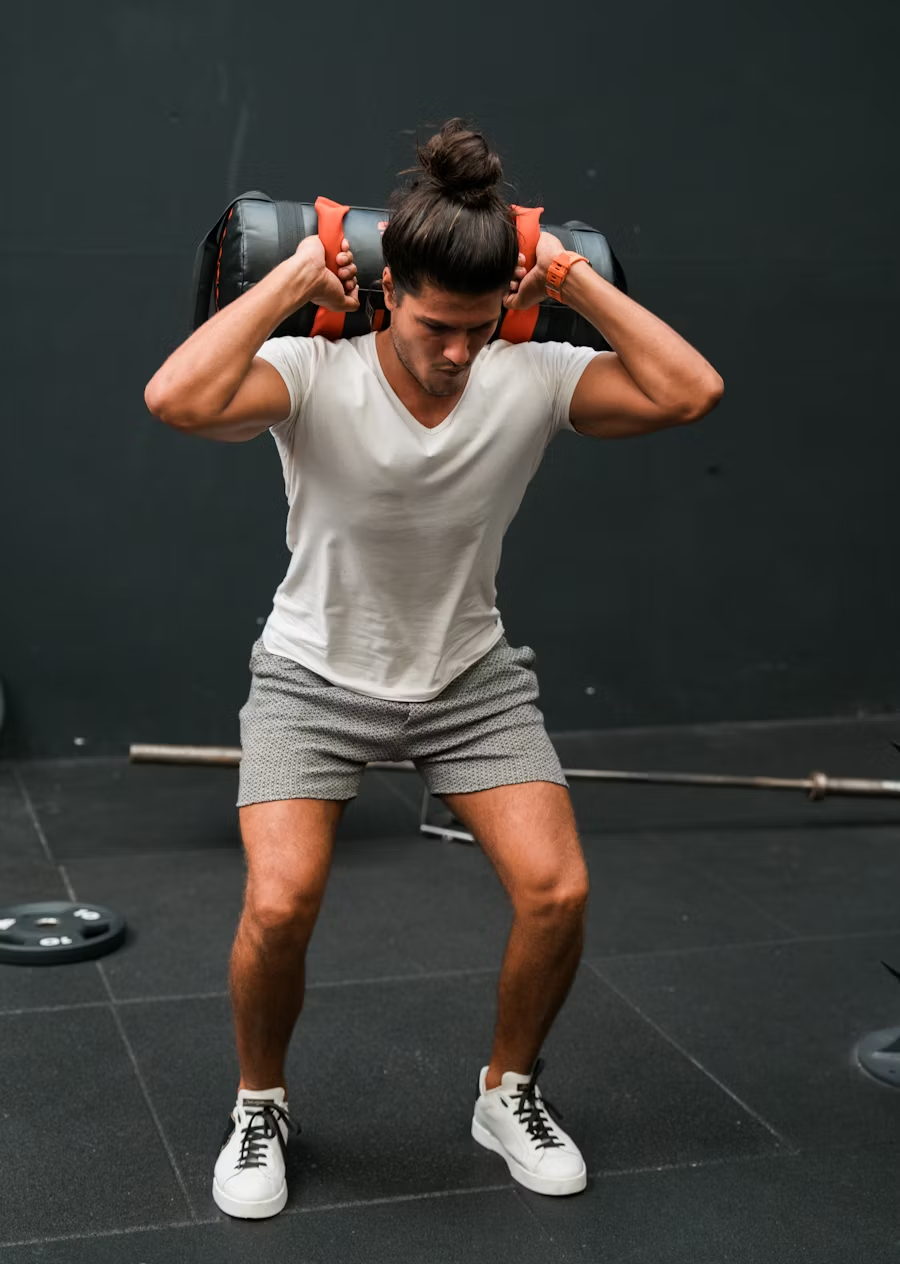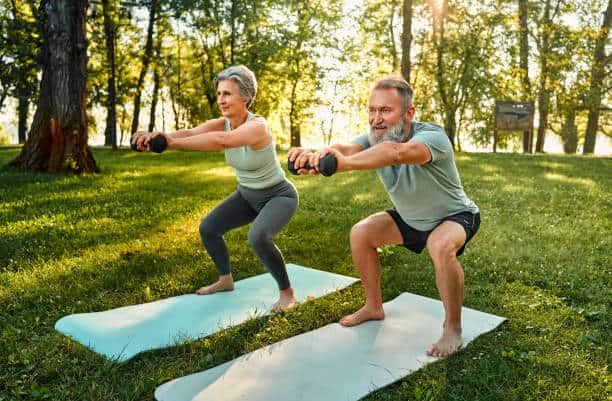Mobility-Strength Fusion: Natural Movement Approach

In retrospect – for the first fifteen years of my career, I was doing many things incorrectly. Not intentionally of course but looking back, I had my clients doing their cardio, then their strength training, then we’d tack on some stretching at the end like it was an afterthought. You know, the classic gym approach that everyone was doing back then.
The wake-up call came when I was working with a 45-year-old construction worker named Mike. This guy could deadlift 400 pounds, no joke. But when I asked him to get down into a deep squat to pick up his water bottle, he looked like a newborn giraffe trying to walk. https://www.rushwalter.com/holistic-strength-training-for-beginners/ His hamstrings were tighter than guitar strings, his ankles had about as much mobility as concrete blocks, and don’t even get me started on his thoracic spine.
That’s when it hit me like a ton of bricks – we were creating strong, immobile monsters. And honestly, it was my partially my fault.
The Problem with Traditional Training
See, here’s the thing that took me way too long to figure out. Your body doesn’t compartmentalize movement the way we’ve been taught to train it. https://www.rushwalter.com/what-is-holistic-strength-training-guide-to-mind-body-fitness-in-2025/ When you’re playing with your kids in the backyard or carrying groceries up three flights of stairs, your muscles aren’t thinking “okay, now it’s strength time” or “now we’re doing mobility work.” They’re working together as one integrated system.
But traditional fitness programming treats your body like it’s made up of separate departments. Monday is chest and triceps. Wednesday is back and biceps. Friday we stretch. It’s like we’re trying to build a car by perfecting each part individually and hoping they’ll work together when we finally assemble them.
I spent years watching clients get stronger and stronger in the gym, only to throw their back out reaching for something under their desk. The disconnect was real, and it was frustrating as heck.
My Natural Movement Awakening
The lightbulb moment happened when I quit enjoying my gym workouts and I wanted more. I watched this presenter on YouTube – a guy in his sixties – demonstrate what he called “natural movement patterns.” https://www.rushwalter.com/natural-movement-strength-patterns-for-real-world-power/ He dropped into a perfect deep squat while rotating his torso and reaching overhead. Then he flowed into a bear crawl that transitioned seamlessly into a single-arm plank.
My jaw was on the floor. This wasn’t just mobility. This wasn’t just strength. This was something completely different – it was mobility and strength working together like they were meant to.
That’s when I discovered that indigenous populations who maintain traditional lifestyles don’t separate these qualities. A study I read later showed that people in non-industrialized societies maintain both strength and mobility well into their seventies and eighties because their daily activities naturally combine these elements.
What Mobility-Strength Fusion Actually Means
Let me break this down for you because the term gets thrown around a lot without people really understanding it. https://www.rushwalter.com/natural-movement-strength-training-for-complete-beginners/ Mobility-strength fusion isn’t about doing some stretches between your bench press sets. It’s about training movement patterns that require both qualities simultaneously.
Think about a deep overhead squat. You need ankle dorsiflexion mobility to keep your knees tracking forward. You need hip flexion mobility to drop into the bottom position. You need thoracic extension mobility to keep that weight overhead. But you also need massive leg strength to stand back up, core strength to maintain spinal position, and shoulder stability to control the load.
That’s fusion. That’s your body working as an integrated unit.
The Science Behind Integration Training
Here’s where it gets really interesting. Research from the Journal of Strength and Conditioning Research showed that people who trained using integrated movement patterns improved both strength and mobility markers 23% faster than those using traditional separated approaches.
Why? Your nervous system doesn’t learn movements in isolation. It learns patterns. https://www.rushwalter.com/functional-movement-vs-traditional-strength-training-complete-guide/ When you train a squat with overhead reach, your brain isn’t just learning to squat and learning to reach – it’s learning to squat-reach as one coordinated pattern.
I started implementing this with my clients around 2023, and the results were honestly mind-blowing. People were achieving deeper squats while getting stronger. They were developing better shoulder mobility while building more pressing power.
My Go-To Natural Movement Patterns
After years of experimentation, I’ve found four movement patterns that give you the biggest bang for your buck when it comes to mobility-strength fusion.
The Deep Squat Flow is my absolute favorite. Start in a standing position, drop into the deepest squat you can manage, then slowly rock side to side for 10 seconds. From there, place your hands on the ground and transition into a bear crawl position for three steps forward. https://www.rushwalter.com/bear-crawl-variations-for-total-body-strength-training/ Then sit back into that deep squat again.
This single flow works ankle mobility, hip flexibility, thoracic rotation, core strength, shoulder stability, and functional coordination. I’ve had clients tell me this one sequence taught them more about their body than years of traditional training.
Crawling Patterns are game-changers. Bear crawls, crab walks, lizard crawls – these aren’t just exercise, they’re full-body integration at its finest. https://www.rushwalter.com/how-crawling-patterns-transform-your-strength-training/ Your shoulders need mobility to place your hands properly, but they also need strength to support your body weight. Your hips need flexibility for the movement but stability to control it.
I remember working with a yoga instructor who could put her leg behind her head but couldn’t bear crawl for thirty seconds without shaking. That’s when you know there’s a disconnect between passive flexibility and functional mobility.
Turkish Get-Ups are probably the most comprehensive mobility-strength pattern I know. You start lying down with a weight overhead and end up standing, hitting every joint and muscle group along the way. The shoulder mobility required is significant, but so is the core strength, hip stability, and full-body coordination.
Loaded Carries with Rotation round out my favorites. Hold a weight at chest level and walk while rotating your torso side to side. You’re building core strength, improving spinal mobility, and challenging your balance all at once.
Common Mistakes I See (And Made Myself)
The biggest mistake? Trying to go too advanced too quickly. I learned this the hard way when I had a client attempt overhead squats on week one. She couldn’t even do a bodyweight squat to proper depth, but I was so excited about this new approach that I got ahead of myself.
Start with basic patterns first. Master the bodyweight squat before adding overhead components. Get comfortable with static holds before adding dynamic movements.
Another mistake is focusing too much on the strength component and neglecting the mobility work. Yes, you’re building strength, but if you’re not actively working on the mobility requirements, you’ll hit a ceiling fast. I usually tell my clients to spend 60% of their effort on the mobility component and 40% on the strength when they’re learning these patterns.
Programming Natural Movement Training
Here’s what a typical week looks like for my clients who are using this approach. Monday might focus on squatting patterns – deep squats, overhead squats, single-leg squats with reaches. Wednesday we hit crawling and ground movements. Friday is carrying patterns and rotational work.
But here’s the key – we’re always working both qualities together. There’s no “mobility day” and “strength day.” Every session integrates both.
I typically program 3-4 natural movement patterns per session depending on client needs, spending about 8-10 minutes on each pattern. That gives us enough time to work on the mobility requirements and build the strength component without burning people out.
The Results Speak for Themselves
The transformation in my clients has been remarkable. I’m talking about people who couldn’t touch their toes suddenly achieving full overhead squats. Construction workers who used to need help getting up from the floor now moving like athletes.
One client, a 52-year-old accountant, went from needing a chair to get off the ground to performing Turkish get-ups with a 35-pound kettlebell in six months. His shoulder pain disappeared, his posture improved, and he told me he felt twenty years younger.
But the real victory is functional. These people aren’t just better at exercise – they’re better at life. They can play with their grandkids, work in their gardens, and move through their daily activities with confidence and ease.
Where to Start Today
If you’re ready to try this approach, start simple. Spend five minutes today working on deep squats – just sit in the bottom position and rock slowly and gently side to side. Feel where you’re tight, notice where you’re weak, and respect both.
Tomorrow, try bear crawling across your living room. Focus on coordination first, strength second. The mobility will come as you practice the pattern.
Natural movement isn’t about perfection – it’s about integration. Your body wants to move as one connected system. All we’re doing is remembering how to let it.
Trust me, once you experience this approach, you’ll never want to go back to training body parts in isolation. Your body will thank you for it. And You will increase your strength and endurance while having fun learning a worthy exercise routine you can utilize anytime and anywhere.
Thanks for reading this fitness blog. Please call on us when we may help you earn the wellness rewards you want and need with the right fitness tools and customized fitness plans. Thanks for reading this fitness blog. I hope you enjoy a healthy day, Walter






